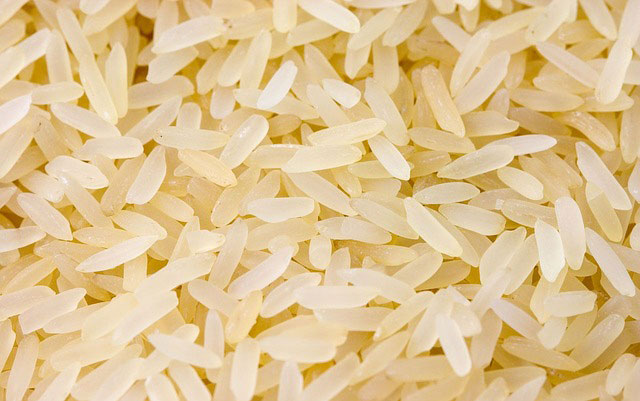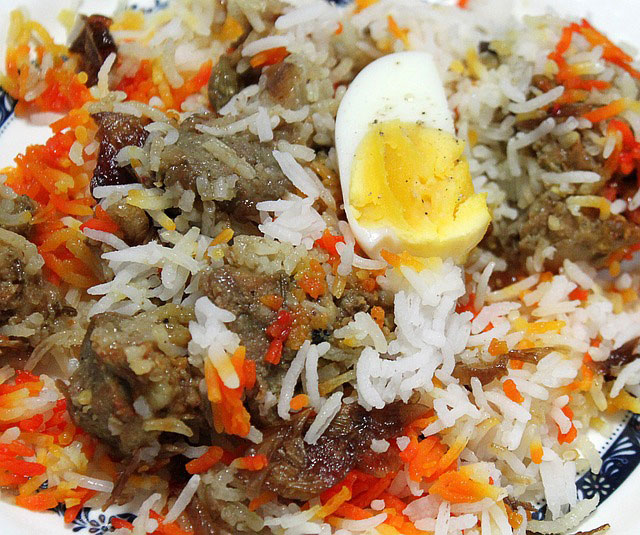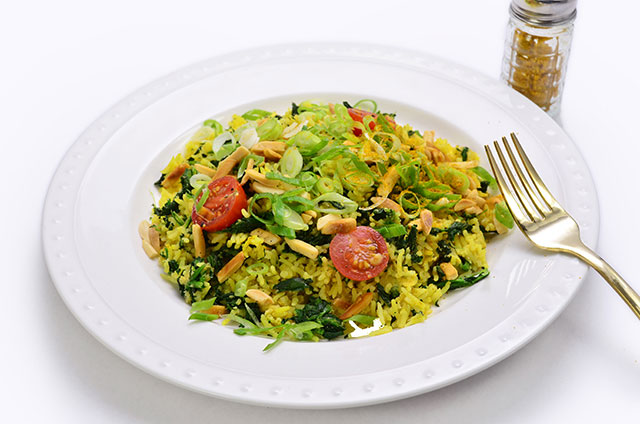
We continue our series about rice with information and recipes about this staple food by discussing long-grain rice—one of the most well-known types.
As with medium- and short-grain rices, long-grain rice is classified by its size. Grains are slender and usually four or five times longer than they are wide. The grains are 7mm in length or longer, and when cooked, result in separate, loose and soft grains. The majority of long-grain rice is grown in Northern India, Bangladesh, Thailand and other parts of Southeast Asia, parts of China, Jordan, Yemen, Iraq, Egypt, and Argentina, Brazil and the United States in the Americas. The many types of long-grain rice include basmati varieties, fragrant jasmine and upland rice. The origin of long-grain rice contributes to its aroma, flavor and texture.

Not only is long-grain rice distinct from medium- and short-grain rice in terms of size, texture and flavor, but it’s also processed somewhat differently. Long-grain rice kernels are more fragile than the shorter varieties, and require more delicate handling. Milling the rice requires a series of discs and rollers for removing the tough outer husk and inner husk one at a time to produce unbroken polished white grains. When packaged for export and sale, long-grain rice is usually stored in hard plastic containers or tightly packed into jute or burlap bags lined with hard plastic fibers, in order to protect the grains. Due to the more intense processing cycle, long-grain rice is often more expensive to buy, leading some countries to produce and export long-grain rice at a higher price, and import less expensive, potentially lower quality, rice to feed their people.

The expense is often worth it. Long-grain rice has been used to create iconic dishes from so many cuisines across the globe. Full of flavor and aroma, the grains are used for Biryanis from India, Pilafs from the Middle East, Red Beans & Rice from the United States, and even plain boiled long-grain white rice as a staple in Southeast Asian dishes. Some of our favorite recipes include Thai Green Chicken Curry with fragrant jasmine rice, Gumbo Bowl and Spicy Basmati Rice with Lentils and Spinach. We love all of these! And when you make them, be sure to use long-grain rice… these fragile, distinct grains have such a unique texture—you’ll definitely love the results you get from using the right type of rice!
Let us know what you tried, and share your recipes below!
Leave a Reply